Earth is home to lots of wonderful wildlife, but sadly, some species that once called our planet home today no longer exist. These are known as extinct animals. And we’re not just talking about roar-some prehistoric dinosaurs! There are ‘recently extinct’ animals, too – animals that have died out since the 1500s. Join us as we travel back in time to discover the sad stories of eight of these incredible creatures…
Eight extinct animals
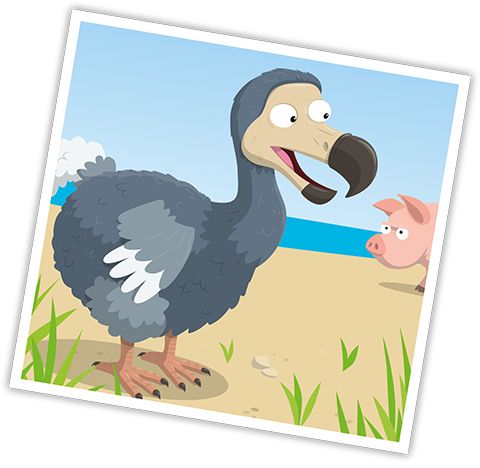
Dodo (Mauritius 1680s)
All that remains today of the dodo are a few bones and partial skeletons – so it’s no wonder we have the expression ‘dead as a dodo’! But these chubby, flightless birds were once alive and well in the forests of Mauritius. Their tragic tale began in the 16th century when Dutch sailors arrived on the island and hunted this brilliant bird. The main cause of the dodo’s extinction, however, was the animals the sailors brought with them, such as cats, pigs, and rats – they guzzled on dodo eggs and out-competed the birds for food, wiping them out by the 1680s.
(* The year of extinction)
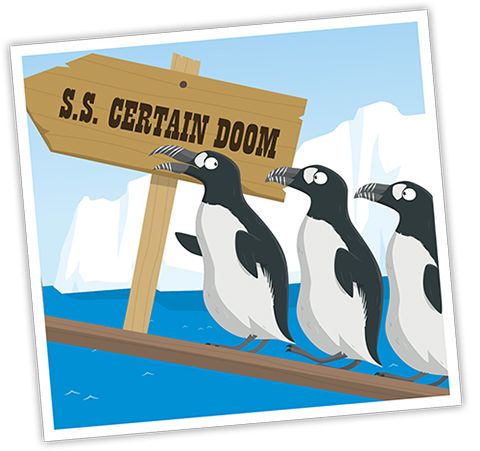
Great Auk (Rocky islands off the North Atlantic coast 1844)
The black-and-white great auk was once found around the North Atlantic, waddling around on craggy coasts – including in the UK – or swimming in the waves using its short wings. But during the early 19th century, the great auk was killed in huge numbers for its feathers, meat, and oils, and because people believed it had supernatural powers. Unafraid of humans, the flightless, defenseless birds were very easy to catch. Sailors would simply round them up and walk them onto ships, before bashing them on the head. Not an auk-some ending.
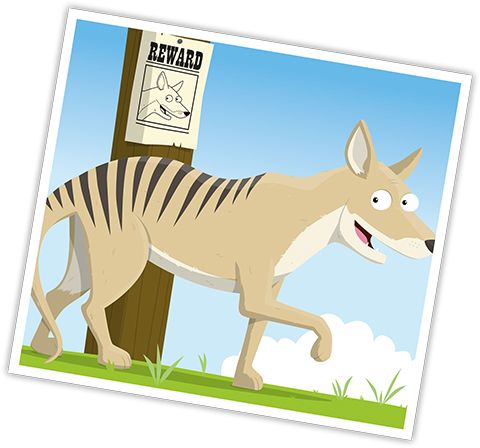
Thylacine (Tasmania, mainland Australia, and New Guinea 1936)
Also known as the Tasmanian tiger, the thylacine was once the world’s largest meat-eating marsupial. It looked a bit like a wolf but had yellow-brown fur, stripes on its back, and a thick, long tail. Its scientific name Thylacinus cynocephalus is Greek for ‘dog-headed pouched one.’ Although populations suffered disease and habitat loss, it’s believed humans were to blame for the thylacine’s ultimate extinction. Since the fierce predators liked to feast on sheep and other livestock, European settlers were quick to kill them – in fact, the Tasmanian government even paid people to do so! The last known thylacine died in 1936, in Hobart Zoo, Australia.
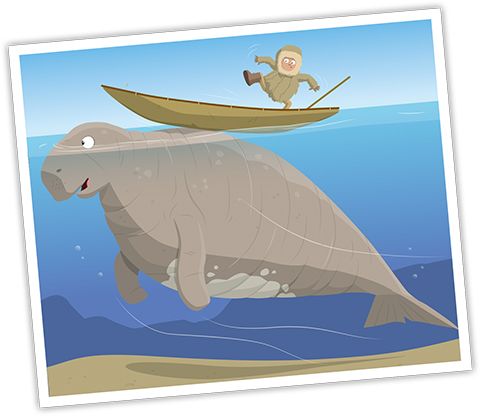
Steller’s Sea Cow (Bering Sea, north Pacific Ocean 1768)
German naturalist Georg W. Steller first studied and described this amazing animal in 1741, in the north Pacific Ocean. Related to today’s manatees and dugongs, Steller’s sea cows were huge marine mammals that grew up to 10m long – that’s twice the length of a large family car! Living in peaceful herds, they grazed on sea grass, kelp, and algae. Sadly, sailors and seal hunters soon realized the animal’s fatty meat provided a hefty food supply for their voyages and they began to hunt them, big time. The result? The Steller’s sea cow became extinct just 27 years after being discovered.
Did you know we have a FREE downloadable Extinct Animals Primary Resource? Great for teachers, homeschoolers, and parents alike!
Aurochs (Europe and Asia 1627)
Turn the clocks back several centuries, and you’ll find huge, horned aurochs roaming the forests of Europe and parts of Asia – perfect hunting fodder for early humans. Today, all that remains of these colossal cattle are a few skeletons in museums, along with some prehistoric cave paintings of the big beasts in Lascaux Cave, France, which may date back 20,000 years! It’s highly likely that aurochs are the ancestors of today’s cows, but they were much, much bigger, growing up to 1.85m in height (way taller than the average man!). The last of the aurochs lived in Poland, where the bulky breed died out in 1627.
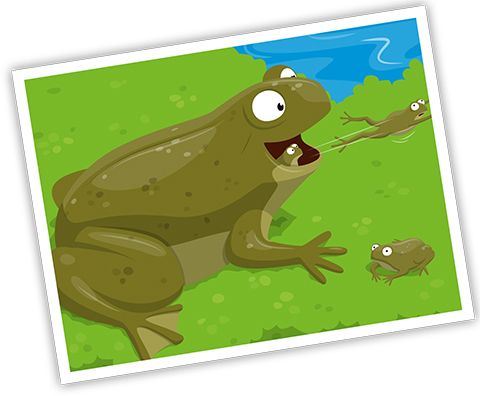
Gastric Brooding Frog (Australia 1980s)
Tadpoles swim in ponds, right? Not the incredible gastric brooding frog’s. The females would ‘eat’ their own frogspawn, brooding the tadpoles in their stomachs for 6-7 weeks, having ‘turned off’ their digestive juices and stopped eating food. They then ‘gave birth’ to a brood of baby frogs by projectile vomiting them out of their mouths. Wow! Sadly, the Australian amphibians were wiped out within a decade of being discovered in 1973. But we have exciting news… by taking cells from gastric brooding frogs frozen in labs years ago, and inserting them into the eggs of today’s living frogs, scientists hope to bring this super species back to life. Sick!
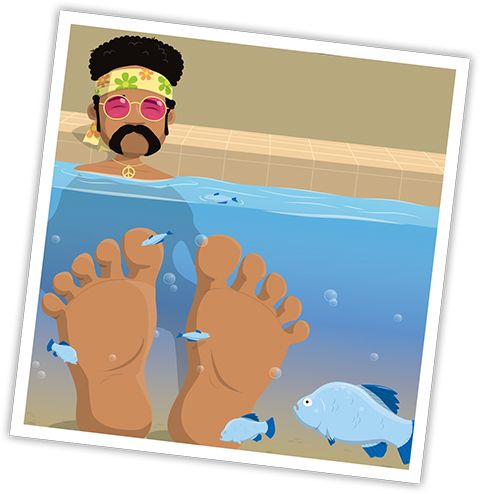
Tecopa Pupfish (California, USA 1981)
These fab little fish once swam in the waters of two hot springs in California’s Death Valley, USA. Tiny but tough, the Tecopa pupfish had adapted to withstand the 43°C waters. But in 1965, the springs where they lived were merged together to build a bathhouse, and the water became too hot and salty for the fish to survive. As a result, in 1970, the poor pupfish was added to the Endangered Species List – unfortunately, it was too late. By 1981, it was declared Extinct – another awful outcome of human development.
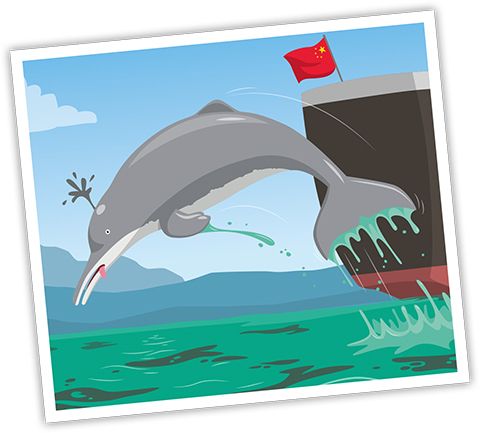
Baiji River Dolphin (China 2004)
In ancient Chinese folklore, the almost blind Baiji River dolphin was said to be the reincarnation of a princess who was drowned after refusing to marry a man she did not love. Sadly, the real-life story of the Baiji is just as tragic. Up until the 1950s, thousands of the small, pale grey aquatic animals splashed about in the murky waters of China’s Yangtze River. But, due to overfishing, collisions with ships, and pollution, it’s believed these mammals are now Extinct. While they’re still listed as Critically Endangered on the IUCN Red List (see right), there have been no confirmed sightings of this spectacular swimmer since 2004.
FAQs
Q: What does the Red List of Threatened Species mean?
We often hear about animals and plants being ‘Endangered’ or ‘Vulnerable’, but what does this actually mean? To help work out which species need the most help, the International Union for Conservation of Nature (IUCN) created the IUCN Red List of Threatened Species in 1964 – a system for classifying species according to the risk of extinction they face.
Q: How does the Red List work?
After scientists have thoroughly evaluated a certain animal, plant, or fungus, they place it in one of several categories on the Red List:
- Least Concern (LC): Widespread and not in imminent danger of being threatened. Phew!
- Near Threatened (NT): A species that could in the near future be placed in a ‘threatened’ category (below).
- Vulnerable (VU): Facing a high risk of extinction in the wild.
- Endangered (EN): A species that’s facing a very high risk of extinction in the wild.
- Critically Endangered (CR): Facing an extremely high risk of extinction in the wild.
- Extinct In The Wild (EW): No longer found in the wild. Populations are only found in zoos, botanical gardens, or breeding programs.
- Extinct (EX): No individuals exist in the wild, in captivity, or cultivation.
Different factors are taken into account before selecting the correct category, including current population size, rate of decline, and geographic range. Scientists around the world regularly reassess the different species to see if there are any changes to the status of the species on the list. In this way, we can help preserve and protect our world’s incredible nature. Fingers crossed!
Conclusion
The stories of these extinct animals remind us of the fragility of our planet’s biodiversity. From the majestic dodo to the enigmatic Baiji River dolphin, each creature had a unique place in the natural world. Let’s learn from their tragic fate and strive to protect the species that still roam our Earth. Together, we can make a difference for the future of our beloved pets and animals.
What do you think of our list of extinct animals? Leave a comment below and let us know!
Hot Pets News – Pets and Animals
- Farmer Found 4 Orphaned ‘Kittens’ in His Barn Only to Find Out They Aren’t Ordinary House Cats…
- Pet 911—Recognizing Veterinary Emergencies: A Guide for Pet Owners
- Sσldier’s Serνice Dσg Jσyfully Reunited With The Inmate Whσ Trained Him
- AL Turkish Angora: Turkish Angora, also known as Turkish Angora Cat, is one of the ancient domestic cat breeds, first appearing in Central Turkey, Ankara region. This cat breed is very unique because it has different colored eyes.
- Can You Wash A Cat With Dish Soap?












